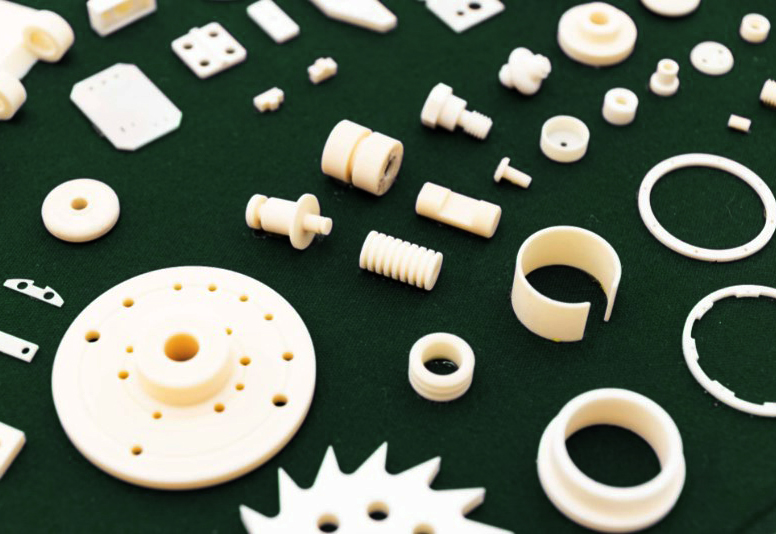Analyzing Cost, Temperature Tolerance, and Compatibility Across Various Ceramic Materials
Introduction
In material science, ceramic materials stand out for their exceptional versatility, offering a unique combination of durability, resistance to high temperatures, and chemical inertness. These properties make ceramics indispensable in a wide range of industrial, technological, and even artistic applications. However, selecting the right ceramic material involves careful consideration of several factors, among which cost, temperature tolerance, and compatibility with other materials are paramount. Each ceramic offers a distinct balance of these attributes, influencing its suitability for specific applications. This article aims to delve into the nuances of various ceramic materials, comparing them across these critical factors. By understanding the trade-offs involved, engineers and designers can make informed decisions, optimizing the performance and cost-efficiency of their projects while ensuring long-term reliability and effectiveness.
Overview of Key Ceramic Materials
Ceramic materials are as diverse as the applications they serve, each bringing unique properties to the table. Some of the most commonly used ceramics include:
-
Alumina (Aluminum Oxide, Al₂O₃): Known for its good overall performance, including high strength and electrical insulation, alumina is widely used in electrical and thermal applications.
-
Zirconia (Zirconium Dioxide, ZrO₂): Distinguished by its exceptional toughness and resistance to crack propagation, zirconia finds applications in cutting tools, bearings, and medical implants.
-
Silicon Carbide (SiC): Valued for its outstanding thermal conductivity and ability to withstand high temperatures, SiC is a favorite in high-power electronics and heat exchangers.
-
Silicon Nitride (Si₃N₄): This material offers excellent thermal shock resistance and is commonly used in automotive and aerospace industries for engine components.
Each of these ceramics embodies a unique set of properties that cater to specific demands, from electrical insulation to mechanical strength and temperature resistance. The following sections will further analyze these materials based on cost, temperature tolerance, and compatibility, providing a clearer picture of their suitability for various applications.

Cost Analysis
The cost of ceramic materials can significantly impact the selection process, especially for large-scale or budget-sensitive projects. Here's a comparison of the relative costs of key ceramic materials:
-
Alumina: Alumina is generally the most cost-effective option among advanced ceramics due to its widespread availability and less complex manufacturing process. It serves as a baseline for comparing the costs of other ceramics.
-
Zirconia: Zirconia is more expensive than alumina, primarily because of the additional processing required to stabilize it at room temperature. Its superior toughness and wear resistance often justify the higher cost in applications demanding such properties.
-
Silicon Carbide: The cost of silicon carbide is higher than alumina and varies depending on the purity and exact composition. Its exceptional thermal conductivity and high-temperature tolerance make it cost-effective for applications where these properties are critical.
-
Silicon Nitride: Silicon nitride tends to be the most expensive of the mentioned ceramics due to the difficulties associated with its production process. However, its outstanding mechanical and thermal properties can make it a cost-effective choice for specific high-performance applications.
Factors influencing the cost of these materials include the complexity of the synthesis and sintering processes, the purity of the raw materials, and the scale of production. While initial material costs are important, the selection process should also consider the lifetime cost savings that more durable or efficient materials can provide.
Temperature Tolerance
The ability of ceramic materials to withstand high temperatures is a crucial consideration for many applications:
-
Alumina: With a melting point of approximately 2072°C, alumina exhibits excellent high-temperature stability, making it suitable for a wide range of applications.
-
Zirconia: Zirconia's melting point is around 2715°C. However, its phase stability is temperature-dependent, which can limit its use in applications requiring consistent exposure to high temperatures.
-
Silicon Carbide: SiC stands out with its ability to withstand temperatures up to 2700°C, coupled with excellent thermal conductivity, making it ideal for high-temperature applications.
-
Silicon Nitride: Si₃N₄ can tolerate temperatures up to 1200°C in oxidative environments and even higher in non-oxidative environments, making it excellent for components exposed to extreme thermal shock.
Compatibility Considerations
The chemical and physical compatibility of ceramic materials with the environments in which they will be used is crucial for ensuring the longevity and functionality of the final product. Each ceramic has unique characteristics that make it more suitable for certain applications:
-
Alumina: Alumina's chemical inertness makes it compatible with a wide range of environments, particularly where resistance to acids and alkalis is required. Its electrical insulation properties also make it ideal for electronic applications.
-
Zirconia: Known for its excellent wear resistance, zirconia is particularly suited for applications where mechanical durability in harsh environments is critical. Its biocompatibility makes it a popular choice for medical implants.
-
Silicon Carbide: The exceptional hardness and thermal conductivity of SiC, along with its resistance to thermal shock, make it compatible with demanding mechanical and thermal environments, such as those found in semiconductor manufacturing equipment and high-performance automotive parts.
-
Silicon Nitride: Si₃N₄ excels in applications requiring high mechanical strength and thermal shock resistance, such as in automotive engine components and bearings. Its low thermal expansion coefficient also minimizes dimensional changes with temperature fluctuations.
This table summarizes the critical aspects of each ceramic material, providing a clear picture of their suitability for various applications based on cost, temperature tolerance, and compatibility considerations.
| Ceramic Material | Cost Comparison | Temperature Tolerance | Compatibility Considerations |
|---|---|---|---|
| Alumina (Al₂O₃) | Most cost-effective, baseline for comparison | Up to 2072°C | Chemical inertness, suitable for a wide range of environments |
| Zirconia (ZrO₂) | More expensive than alumina, justified by toughness and wear resistance | Up to 2715°C, phase stability is temperature-dependent | Excellent wear resistance, suited for harsh environments and medical implants |
| Silicon Carbide (SiC) | Higher than alumina, varies by purity/composition | Up to 2700°C, excellent thermal conductivity | Exceptional hardness and thermal shock resistance, ideal for mechanical and thermal environments |
| Silicon Nitride (Si₃N₄) | Most expensive, outstanding properties justify cost | Up to 1200°C in oxidative environments, higher in non-oxidative | High mechanical strength and thermal shock resistance, minimal dimensional changes with temperature |
Case Studies
Real-world applications highlight the importance of choosing the right ceramic material based on cost, temperature tolerance, and compatibility:
-
Electronics Industry: Alumina substrates are widely used in electronic packaging due to their cost-effectiveness and excellent electrical insulation. Their compatibility with various metallization processes also allows for versatile circuit designs.
-
Aerospace Components: Silicon carbide is chosen for components like turbine blades and vanes, where its high-temperature tolerance and thermal shock resistance are crucial for withstanding the extreme conditions of aerospace environments.
-
Medical Implants: Zirconia's biocompatibility and wear resistance make it ideal for hip and knee replacements, offering patients a combination of durability and functionality that significantly improves quality of life.
-
Automotive Engineering: Silicon nitride is used in high-performance bearings and engine parts, where its mechanical strength and resistance to thermal shock improve the efficiency and reliability of automotive systems.
Conclusion
In navigating the complex landscape of ceramic materials, understanding the nuanced interplay between cost, temperature tolerance, and compatibility is paramount. This analysis underscores the necessity of a holistic approach in selecting the most suitable ceramic material for any given application. As illustrated through various case studies, the right choice of ceramic not only enhances performance and efficiency but also significantly impacts the economic and environmental sustainability of manufacturing processes and product lifecycles.
The future of ceramic materials in industrial and technological applications looks promising, with continuous advancements in material science pushing the boundaries of what is possible. Innovations in ceramic processing and synthesis methods are expected to further improve the properties of alumina, zirconia, silicon carbide, and silicon nitride, among others, expanding their applicability and efficiency across even more sectors.
For those embarking on this selection journey, Advanced Ceramic Materials (ACM) offers a wealth of resources and high-quality ceramic products. Their expertise in alumina, zirconia, silicon carbide, and silicon nitride, among other ceramics, provides invaluable guidance in making informed material choices tailored to specific application needs. As industries strive for higher performance standards and environmental sustainability, the role of ceramics will undoubtedly grow. Collaborations between material scientists, engineers, ACM, and industry professionals are essential in driving these innovations, ensuring that the potential of ceramic materials is fully realized. The journey from raw material selection to final application showcases the critical importance of informed material choice, highlighting the transformative impact of ceramics in revolutionizing industries worldwide.
{{item.content}}
LEVE A REPLY
{{item.children[0].content}}
{{item.content}}
LEAVE A REPLY
SUBSCRIBE OUR NEWSLETTER
- Boron Nitride in Cosmetics: Enhancing Performance and Sensory Appeal
- Maximize MOCVD Yield and Purity with Hexagonal Boron Nitride Setters
- What Are the Advantages and Uses of Boron Nitride Ceramic Sheet?
- The Compression Annealing Advantage for Pyrolytic Boron Nitride
- Beyond Insulation: The Surprising Spectrum of Ceramic Thermal Conductivity











